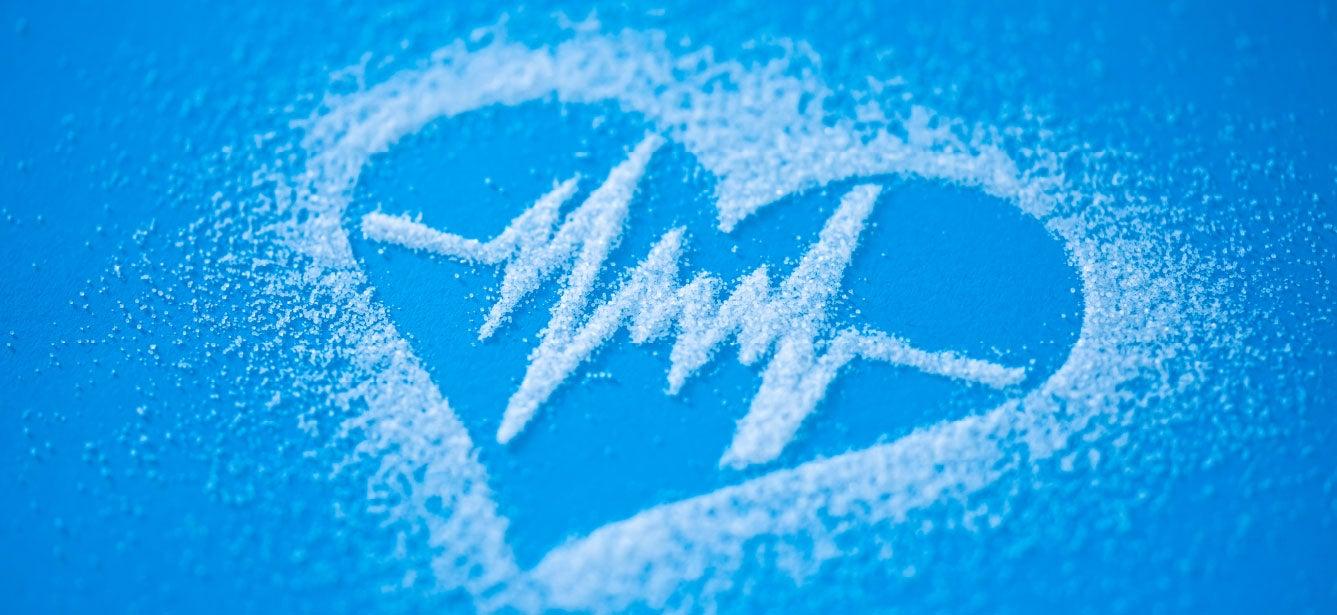
Related Topics
There’s a lot of information out there about the best foods for older adults. And we all make choices based on cultural preferences and, hopefully, our health. But what about foods to avoid after 60?
The list below, while not exhaustive, highlights some dietary guidance for aging well.
How older adults can make better food choices: What to look out for
1. 'Empty-calorie' foods
"Empty calorie" or “junk” foods are foods that may fill you up, but they don't provide nutritional value. They’re often high in added sugar, refined carbohydrates, saturated fat, sodium, and calories. It's a good idea to keep these types of foods to "once-in-a-while" treats. Some exmples: potato chips and other fried snacks, pastries, cookies, sugary soft drinks, sports drinks, and candy.
2. Foods that may pose a choking hazard
Some older adults may have difficultly swallowing or chewing due to dry mouth, which can result from dehydration, diabetes, nerve damage, or certain medications. For people with swallowing issues, foods need to be the right consistency. Some examples: nutrition shakes, soups, pudding, pureed or mashed vegetables. Watch out for foods that may pose a significant choking hazard, including:
- Hot dogs
- Steak
- Popcorn
- Hard candy
- Bread (especially white bread)
- Crackers and rice cakes
- Chicken with bones
- Large chunks of fruit
3. Raw or unpasteurized foods
Since older adults’ immune systems are less effective at fighting infections, foodborne illness is a concern. According to the Centers for Disease Control and Prevention (CDC), Listeria is the third leading cause of death from food poisoning in the U.S. Older adults are at particular risk for this potentially life-threatening infection, since more than 50% of all Listeria cases affect people 65 and older.
What is Listeria? It’s an illness typically caused by eating contaminated food—especially produce and dairy products. To lower their risk of Listeria and other foodborne illnesses, older adults should avoid eating:
- Unpasteurized milk, or any products made with unpasteurized milk (e.g., yogurt)
- Melons kept in the fridge for more than 7 days or left at room temperature for more than 4 hours
- Soft cheeses (e.g., brie, Camembert, feta, queso blanco)
- Raw sprouts
- Pâté or meat spreads that require refrigeration
- Cold smoked fish that's not canned or shelf-stable
Older adults should also stay away from lunch meats and fermented or dry sausages—unless they’re heated to an internal temperature of 165°F right before consumption.
4. Grapefruit
You wouldn't expect grapefruit to be on a list of foods to avoid after 60. But the juice of a grapefruit can interfere with medications taken for insomnia, anxiety, and high blood pressure. Other fruits—and fruit juices like orange juice, cranberry juice, and tomato juice consumed in moderation—are a better bet for older adults.
5. Alcohol
As we get older, a glass of wine or mug of beer may affect us differently than it did when we were younger. Not only does alcohol negatively impact sleep quality; it can raise blood pressure and cause hypoglycemia in older adults with diabetes. Consuming alcoholic beverages can also interfere with some medications. Older adults should speak with their doctor to find out how alcohol may impact their health. The latest U.S. Dietary Guidelines advise those who do drink alcohol should stick to two drinks or less a day for men and one drink or less a day for women.1
6. Caffeine
Like alcohol, we may react differently to caffeine as we age. For many older adults, caffeine can cause “jitters” and increase anxiety. It can also increase heart rate, which may be dangerous for seniors with a heart condition. Caffeine is found not only in coffee, but also in teas, chocolate, and even some over-the-counter pain relief medications. Older adults who are experiencing unpleasant side effects from caffeine can replace it with decaffeinated coffee, herbal tea, or water. But it’s important to cut down on caffeine slowly to avoid withdrawal headaches and nausea.
7. High-sodium foods
A diet that’s high in sodium can cause your body to retain too much fluid, resulting in high blood pressure and a greater risk of heart disease, stroke, and kidney disease. The American Heart Association recommends no more than 1,500 mg of sodium per day for most adults, especially those with hypertension. Foods rich in potassium can blunt the effects of high sodium. Seniors can curb their sodium and increase their potassium intake by:
- Eating potassium-rich foods like avocados, bananas, or apricots
- Limiting salty snack foods, lunch meats, and salad dressings
- Reading labels and, when available, opting for low-sodium or reduced-sodium versions of foods
- Seasoning food with herbs and spices instead of table salt
- Speaking with your health care providers about medications that may contain high levels of sodium (there maybe be a lower sodium option)
8. Fried foods
While French fries, donuts, and egg rolls may be tasty, they're often sources of unhealthy fats and oils. Fried fare is typically high in trans fats, hydrogenated oils, and tropical oils, which raise cholesterol and are linked to heart disease, diabetes, and cancer. They're also often loaded with calories, which can lead to increased calorie intake, weight gain, and obesity. Steer clear of the bad fats and include more healthy fats in your daily diet.
One way to get help balancing meals: use pre-portioned meal delivery services. Many meal delivery kits are full of whole foods that are easy to prepare, taking the guesswork out of healthy eating.
Is an older adult you know having trouble affording healthy foods?
If an older adult you care for is on a tight budget, they may rely on less-expensive processed and convenience foods. But you should know there are several food assistance programs that can help seniors with low income eat healthier at no extra cost. These include:
- The Supplemental Nutrition Assistance Program (SNAP): Once known as the Food Stamp program, SNAP provides monthly financial aid to eligible households. SNAP benefits are transferred to recipients via an Electronic Benefits Transfer (EBT) card, which can be used just like a debit card to buy eligible food in most grocery stores, other retail stores, and some online grocery delivery services. The average SNAP benefit for a senior living alone is $188 per month.2 Benefit periods for SNAP can range from one month to three years. For Brenda, age 69, SNAP is "an immense stress-reliever."
"I no longer have to choose between saving every spare dollar or putting food on the table," Brenda said.
- The Senior Farmers’ Market Nutrition Program (SFMNP): Annually, this federally funded benefits program helps more than 800,000 older adults with low income purchase fresh, locally grown vegetables, fruits, herbs, and honey at farmers’ markets, roadside stands, and community supported agriculture programs (CSAs). Seniors who receive SNAP benefits or participate in another income-based assistance program might also qualify for SFMNP. Not every state offers the program.
- The Commodity Supplemental Food Program (CSFP): Also referred to as the Senior Food Box program, CSFP helps eligible participants aged 60 and older eat healthier with nutritious surplus food from the U.S. Department of Agriculture (USDA). CSFP food packages include everything from milk, juice, and cereal to canned meat, poultry, and fish. The program is not available in every state.
- The Emergency Food Assistance Program (TEFAP): TEFAP is a federal food assistance program that provides resources to soup kitchens, food banks, food pantries, and other community-based partners that feed people in need. Each state sets its own eligibility criteria. Seniors who qualify can shop at their local food bank or dine at a community kitchen for free; no coupons or EBT card are needed.
See if you, a family member, or a client is eligible for SNAP or any of these other food assistance programs using NCOA's BenefitsCheckUp, a free online tool that connects millions of older adults and people with disabilities with benefits programs that can help pay for health care, medicine, food, utilities, and more.
Sources
1. Dietearyguidelines.gov. Top 10 Things You Need to Know about the U.S. Dietary Guidelines for Americans, 2020-2025. Found on the internet at https://www.dietaryguidelines.gov/resources/2020-2025-dietary-guidelines-online-materials/top-10-things-you-need-know-about-dietary
2. USDA. Characteristics of Supplemental Nutrition Assistance Program Households: Fiscal Year 2023. April 2025. Found on the internet at https://fns-prod.azureedge.us/sites/default/files/resource-files/snap-FY23-Characteristics-Report.pdf




